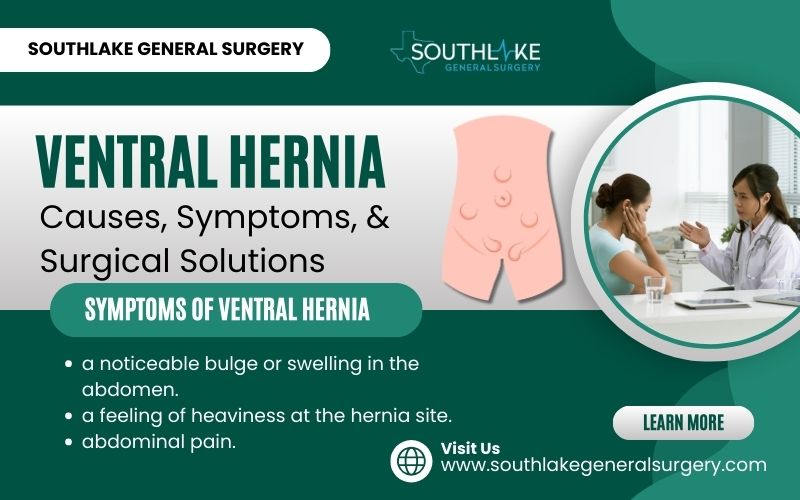Ventral hernias are a prevalent issue where the intestines or other tissues protrude through a weak spot or opening in the abdominal wall. These hernias can cause discomfort, pain, and potential complications if left untreated.
Understanding the causes, symptoms, diagnosis, and treatment options for ventral hernias is essential for anyone who may be at risk or experiencing related symptoms.
In this blog, we will provide a comprehensive overview of ventral hernia repair. We will discuss the definition and types of ventral hernias, the causes and risk factors, symptoms, diagnosis, and treatment options available.
We will also delve into the importance of choosing a skilled healthcare provider for ventral hernia repair, including the evaluation of risk and the potential need for component separation, and provide information on recovery and rehabilitation after the procedure.
By the end of this blog, you will have a better understanding of ventral hernias, their treatment options, and how to ensure a successful recovery. It is important to note that individual cases may vary, and it is always best to consult with a healthcare professional for personalized advice and treatment recommendations.
Key Highlights
- Ventral hernias occur when the intestines or other tissues protrude through a weakness in the abdominal wall.
- Symptoms of ventral hernias include a visible bulge in the abdomen, discomfort or pain, and potential complications such as intestinal blockage or tissue death.
- Diagnosis involves a physical examination and may include imaging techniques like CT scans or ultrasounds.
- Treatment options for ventral hernias include surgical repair and non-surgical management strategies.
- Surgical repair can be done through open surgery or laparoscopic techniques, and mesh may be used to reinforce the abdominal wall.
- Recovery and rehabilitation after ventral hernia repair involve postoperative care and physical rehabilitation.
Understanding Ventral Hernias
Ventral hernias occur when abdominal tissue protrudes through a weak spot in the abdominal wall. These can manifest as incisional or umbilical hernias, affecting the blood supply and requiring surgical repair.
Risk factors include obesity, heavy lifting, and previous abdominal surgery. Physical examination and imaging techniques like CT scans aid in diagnosis. Surgical techniques such as laparoscopic repair or open surgery, which is a common surgery, are performed by general surgeons. Understanding ventral hernias is vital for timely intervention and successful management.
Definition and Types of Ventral Hernias
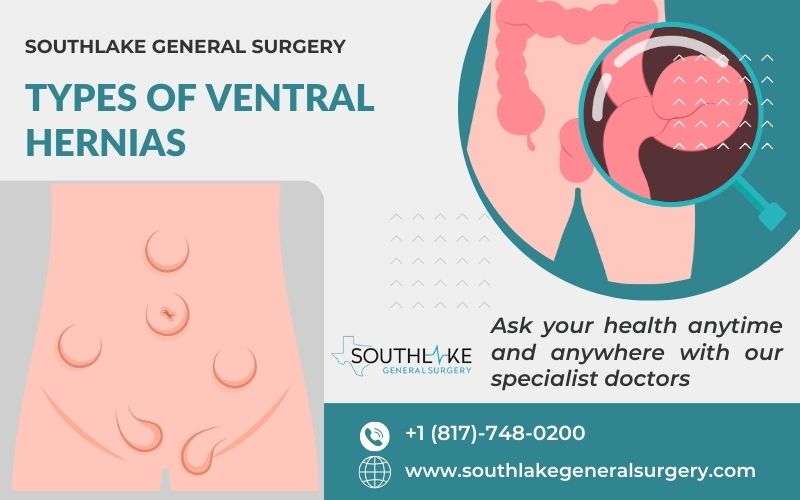
Ventral hernias occur when abdominal tissue protrudes through a weakened area in the abdominal wall, also known as the abdominal cavity. The three main types are umbilical, epigastric, and incisional hernias.
Umbilical hernias develop near the belly button, epigastric hernias form above the navel, and incisional hernias occur at the site of a previous surgical incision.
Proper diagnosis and treatment require a thorough understanding of these differences. Each type presents unique challenges that require tailored hernia repair approaches.
Causes and Risk Factors
Ventral hernias can develop due to factors like abdominal surgery, weakened abdominal wall, or heavy lifting. Patients with a history of hernias or connective tissue disorders are at a higher risk.
Obesity and chronic cough can also contribute to their occurrence. Factors such as aging and pregnancy may weaken the abdominal muscles, increasing the likelihood of developing a ventral hernia.
Symptoms of a Ventral Hernia
Ventral hernia symptoms may include a noticeable bulge or swelling in the abdomen, especially when straining or standing. Patients might also experience abdominal pain, discomfort, or a feeling of heaviness at the hernia site.
Additional signs can involve nausea, vomiting, or constipation, particularly if the intestine becomes trapped within the hernia. In some cases, a ventral hernia may present as a tender lump under the skin, which can cause hernia pain. Recognizing these symptoms is crucial for timely medical intervention.
Recognizing the Signs
A ventral hernia can present various signs, including a noticeable bulge or swelling in the affected area. Pain or discomfort during activities like lifting or straining may also indicate a ventral hernia.
It’s essential to pay attention to any changes in your abdominal wall, especially if there is tenderness or a feeling of pressure in the area. Seek medical advice if you experience persistent symptoms or have concerns about a possible hernia.
When to Seek Medical Attention
If you experience persistent pain, visible bulging, or changes in the appearance of a ventral hernia, seek medical attention promptly. Other warning signs include nausea, vomiting, and difficulties with bowel movements.
Additionally, sudden severe pain or redness at the hernia site may indicate serious complications needing immediate evaluation by a healthcare professional.
Early intervention is key to managing ventral hernias successfully, so never delay seeking medical help when experiencing concerning symptoms.
Diagnosis of Ventral Hernias
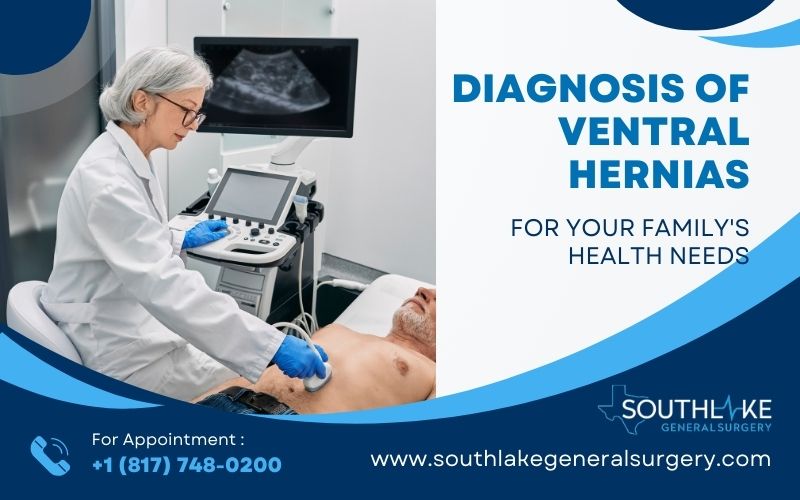
Ventral hernias are diagnosed through physical examinations, blood tests, and imaging techniques. During a physical exam, healthcare providers assess the abdomen for bulges or weak spots.
Blood tests may be conducted to check for signs of infection or other underlying conditions that could affect hernia treatment. Imaging techniques such as ultrasound, CT scans, or MRI may also be used to confirm the presence and extent of a ventral hernia. It also helps determine the size and location of the hernia.
These diagnostic tools are crucial in identifying the appropriate treatment plan, whether it involves non-surgical management or surgical repair. Prompt diagnosis is essential to ensuring effective management of ventral hernias and preventing potential complications.
Physical Examination Findings
During a physical examination for ventral hernias, doctors may palpate the abdomen to locate the hernia. They assess for any bulges or unusual areas in the abdominal wall.
In some cases, a cough test might be performed to observe hernia protrusion during increased intra-abdominal pressure. Additionally, doctors may inquire about symptoms like pain or discomfort at the site and possible causes, such as previous abdominal surgeries or obesity.
These physical examination findings help in confirming the presence and size of the hernia, guiding further diagnostic and treatment decisions.
Imaging Techniques and Their Importance
Imaging techniques play a crucial role in diagnosing and planning treatment for ventral hernias. Modalities such as CT scans and ultrasound provide detailed insights into the size and location of the hernia, aiding surgeons in determining the most appropriate approach.
These imaging tools are essential in assessing the extent of the hernia and identifying any associated complications, guiding healthcare providers towards the most effective treatment strategies.
Treatment Options Available
For ventral hernias, treatment options include both non-surgical and surgical approaches. Non-surgical management focuses on lifestyle modifications to alleviate symptoms, while surgical repair methods involve techniques like robotic surgery, laparoscopic ventral hernia repair, or open surgery with synthetic mesh placement.
In some cases, biological mesh may be used to reduce the risk of infection and promote the development of scar tissue for reinforcement. Your healthcare provider will guide you in selecting the most suitable option based on the size of the hernia, your overall health, and the risk factors involved. Understanding these choices is essential for making informed decisions regarding your care.
Non-Surgical Management Strategies
Non-surgical management strategies for ventral hernias, also known as groin hernias, primarily focus on lifestyle modifications and symptom control. These strategies typically involve weight management, avoiding heavy lifting, and maintaining physical activity within limits that do not exacerbate the hernia.
In some cases, wearing supportive garments may provide relief. However, it is essential to consult with a healthcare provider to ensure these strategies are appropriate for individual cases and to monitor the hernia’s progression closely.
These strategies, along with surgical options, are outlined in international guidelines for groin hernia management, providing a comprehensive approach to treating this common medical condition.
Surgical Repair Methods
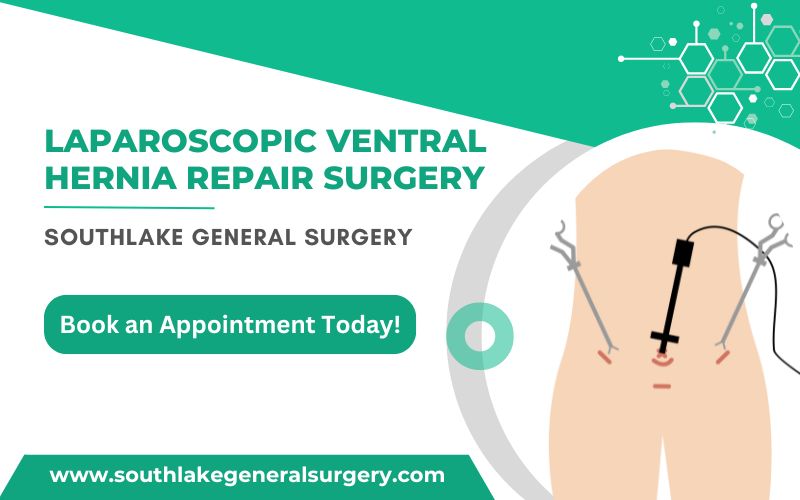
To address ventral hernias surgically, various methods are employed, depending on the size and complexity of the hernia.
Surgical repair methods commonly include open hernia repair surgery, laparoscopic ventral hernia repair, or minimally invasive surgery.
Open surgery involves making a larger incision to directly access and repair the hernia, while laparoscopic surgery utilizes smaller incisions and a camera for a minimally invasive approach.
Minimally invasive surgery, also known as keyhole surgery, involves using specialized tools and techniques to perform the hernia surgery through small incisions, resulting in less pain, scarring, and a faster recovery time.
Both laparoscopic and minimally invasive surgeries may involve the use of synthetic mesh to reinforce the abdominal wall and reduce the risk of hernia recurrence.
Preparing for Surgery
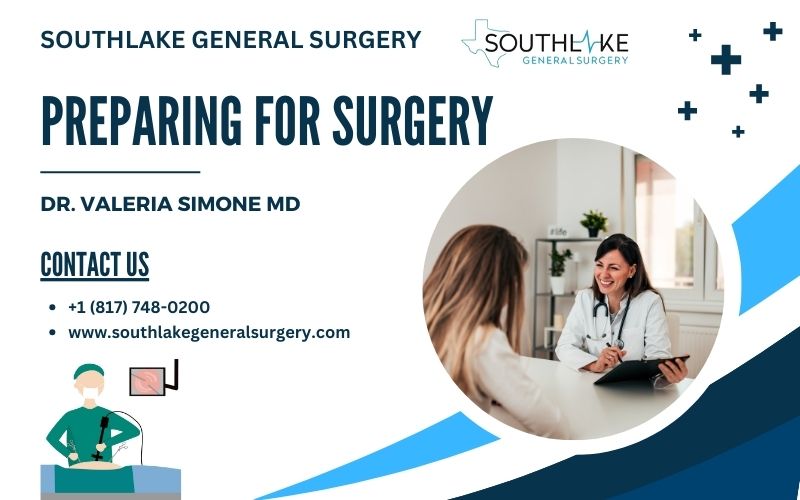
Before undergoing ventral hernia repair, thorough preparation is crucial. Understanding what to expect before the procedure is vital. Mentally and physically, preparing yourself can positively impact the outcome. Follow pre-surgery guidelines diligently to ensure a smooth experience.
Maintaining good overall health and adhering to any specific instructions provided by your healthcare provider is essential. Being well-prepared can help reduce postoperative complications and aid in a speedier recovery. Take proactive steps to ensure you are fully ready for the surgical intervention.
What to Expect Before the Procedure
Clear communication with your healthcare team is crucial. Before the ventral hernia repair, you will likely undergo preoperative tests. It’s important to follow instructions related to fasting and medication intake. Expect a discussion on the procedure and anesthesia options, including the use of general anesthesia to make you asleep and pain-free during the surgery.
Your surgeon will provide information on potential risks and complications. Mental preparedness plays a significant role, so feel free to ask any questions or express concerns. Ensuring you understand the process will help you approach the surgery with confidence.
How to Prepare Mentally and Physically
Preparing mentally and physically for ventral hernia surgery is essential. Stay informed about the procedure, ask questions, and discuss any concerns with your healthcare provider. Engage in relaxation techniques to alleviate anxiety and maintain a positive mindset.
Physically, follow any preoperative instructions provided, such as fasting guidelines. Stay active within the limits set by your doctor to promote better recovery outcomes. Being mentally and physically prepared can significantly contribute to a smoother surgical experience and improved rehabilitation.
The Role of Dr. Valeria Simone MD and Southlake General Surgery
Dr. Valeria Simone MD, from Southlake General Surgery, is essential in performing skilled ventral hernia repair procedures. With a focus on patient outcomes and utilizing advanced techniques like laparoscopic ventral hernia repair, they ensure comprehensive care.
Dr. Valeria Simone MD’s expertise in managing ventral hernias of the abdomen is evident through successful surgical interventions. Patients benefit from the innovative approaches and personalized treatment plans offered by Southlake General Surgery, making them a top choice for hernia patients seeking quality care.
Expertise in Ventral Hernia Repair
Dr. Valeria Simone MD at Southlake General Surgery specializes in ventral hernia repair, offering expert knowledge and skill in abdominal wall surgery. With a focus on patient outcomes and using advanced surgical techniques, Dr. Simone ensures the highest level of care.
Southlake General Surgery is renowned for handling large ventral hernias with precision, including complex cases requiring intricate repair methods. Trust in their expertise for comprehensive management of ventral hernias, emphasizing both medical and surgical solutions.
Why Choose Southlake General Surgery?
Choosing Southlake General Surgery ensures expert ventral hernia repair by Dr. Valeria Simone MD. With a proven track record and specialized expertise in hernia treatments, patients benefit from personalized care and successful outcomes. Make the right choice for your hernia repair needs with Southlake General Surgery, Texas, USA.
Recovery and Rehabilitation
Recovery after ventral hernia repair is crucial for successful outcomes. Postoperative care guidelines recommend avoiding strenuous activities and heavy lifting to prevent complications. Patients should follow instructions diligently for a smooth recovery.
Tips like maintaining a healthy lifestyle and adhering to the prescribed medication regimen aid in the healing process. Physical rehabilitation may be necessary to regain strength and mobility.
Close monitoring by healthcare providers ensures appropriate healing and helps prevent any post-surgery issues. Compliance with rehabilitation protocols is vital for a swift recovery.
Postoperative Care Guidelines
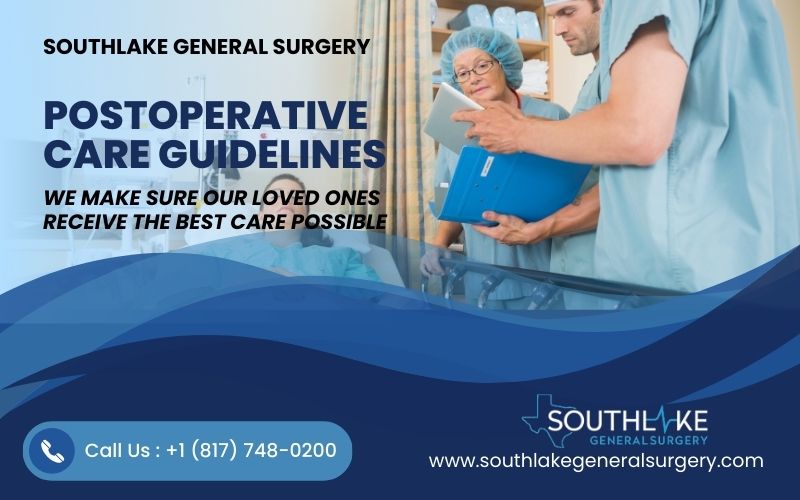
Immediately after ventral hernia repair, following postoperative care guidelines is crucial for a successful recovery. Patients should adhere to instructions provided by their healthcare provider, including restrictions on heavy lifting and engaging in physical activities.
Monitoring for any signs of complications such as fever, severe pain or redness at the incision site is essential. It is important to maintain overall health, take prescribed medications as directed, and attend follow-up appointments to ensure a smooth and steady healing process.
Tips for a Smooth Recovery

After ventral hernia repair, proper care enhances recovery. Following surgery, avoid heavy lifting to prevent strain on the abdominal wall. Participate in gentle physical exercises recommended by your healthcare professional. Maintain a balanced diet to promote healing and strengthen tissues.
Attend follow-up appointments for monitoring. Report any unusual symptoms promptly. Taking prescribed medications on schedule aids in pain management and reduces the risk of complications. Rest adequately and gradually ease back into daily routines to support a smooth recovery process.
Conclusion
If you are facing ventral hernia issues, it’s crucial to understand the symptoms, diagnosis, treatment options, and recovery process. Southlake General Surgery, led by Dr. Valeria Simone MD, specializes in ventral hernia repair with expertise and care. Whether opting for surgical or non-surgical methods, their comprehensive approach ensures your well-being.
Don’t hesitate to seek medical attention when needed and follow postoperative care guidelines for a smooth recovery. If you have questions or wish to schedule an appointment, get in touch with Southlake General Surgery today. They prioritize your health and comfort.
Make an Appointment
To schedule your ventral hernia repair consultation, contact Southlake General Surgery healthcare expert today at +1 (817) 748-0200. Our experienced team, led by Dr. Valeria Simone MD, specializes in abdominal wall surgeries and ensures individualized care for optimal patient outcomes.
Whether you require surgical intervention for an abdominal hernia or need further evaluation, our practice is dedicated to your health and well-being. Don’t delay in addressing potential complications; make an appointment with us to begin your journey towards recovery and improved quality of life.
Frequently Asked Questions
Can ventral hernias heal on their own?
Ventral hernias rarely heal on their own and typically require medical intervention. Ignoring treatment can lead to complications. Early diagnosis and appropriate management are crucial for a successful outcome. Seek medical advice promptly if you suspect a ventral hernia.
How serious is a ventral hernia?
A ventral hernia can be serious if left untreated, leading to complications like bowel obstruction or strangulation. Seeking medical attention promptly is crucial to prevent these risks. Understanding the seriousness of a ventral hernia is vital for timely intervention and successful treatment.
What are the consequences of leaving a ventral hernia untreated?
Ignoring a ventral hernia can lead to complications like bowel obstruction, incarceration (when the intestine gets trapped), and strangulation (cutting off blood supply). Timely treatment is crucial to prevent these serious conditions.
What complications can arise from a ventral hernia?
Possible complications of a ventral hernia include incarceration (trapping of tissue), strangulation (cutting off blood supply), and bowel obstruction. These complications may lead to severe pain, nausea, and vomiting, and require immediate medical attention.
Is mesh repair necessary for all ventral hernias?
In ventral hernia repair, not all cases require mesh. The decision depends on the hernia size, location, and patient factors. Mesh offers additional support but isn’t always mandatory. Surgical assessment determines the most suitable approach for optimal outcomes.
What is the cost of Ventral Hernia Repair Surgery in Southlake, Texas?
The cost of ventral hernia repair surgery in Southlake, Texas, can vary depending on several factors, such as the type of hernia, surgical technique used, and hospital fees. It is recommended to consult with Dr. Valeria Simone MD at Southlake General Surgery for accurate pricing information.
Medically Reviewed By: Dr. Valeria Simone MD
Board-certified General Surgeon at Southlake General Surgery, Texas, USA.
Follow us on Facebook and YouTube.
References:
- Smith, J., & Parmely, J. D. (2023, August 8). Ventral Hernia. StatPearls – NCBI Bookshelf. https://www.ncbi.nlm.nih.gov/books/NBK499927/
- Ventral Hernia. (2024, January 1). PubMed. https://pubmed.ncbi.nlm.nih.gov/29763102/
- Misiakos EP, Machairas A, Patapis P, Liakakos T. Laparoscopic ventral hernia repair: pros and cons compared with open hernia repair. JSLS. 2008;12(2):117-125.
- Misiakos EP, Patapis P, Zavras N, Tzanetis P, Machairas A. Current Trends in Laparoscopic Ventral Hernia Repair. JSLS. 2015;19(3):e2015.00048. doi:10.4293/JSLS.2015.00048
- Laparoscopic Ventral Hernia Repair. (n.d.). SpringerLink. https://link.springer.com/book/10.1007/978-2-8178-0752-2
- Jayaram PR, Pereira FD, Barrett JA. Evaluation of dynamic ultrasound scanning in the diagnosis of equivocal ventral hernias with surgical comparison. Br J Radiol. 2018;91(1088):20180056. doi:10.1259/bjr.20180056
- Holihan, J. L., Cherla, D. V., Blair, K. J., Chua, S. S., Hasapes, J. P., Matta, E. J., Shiralkar, K., Surabhi, V. R., Tammisetti, V. S., Ko, T. C., & Liang, M. K. (2018, April 1). Computed tomography in ventral hernia diagnosis: have we improved? A quality improvement initiative. the Journal of Surgical Research/Journal of Surgical Research. https://doi.org/10.1016/j.jss.2017.11.055

